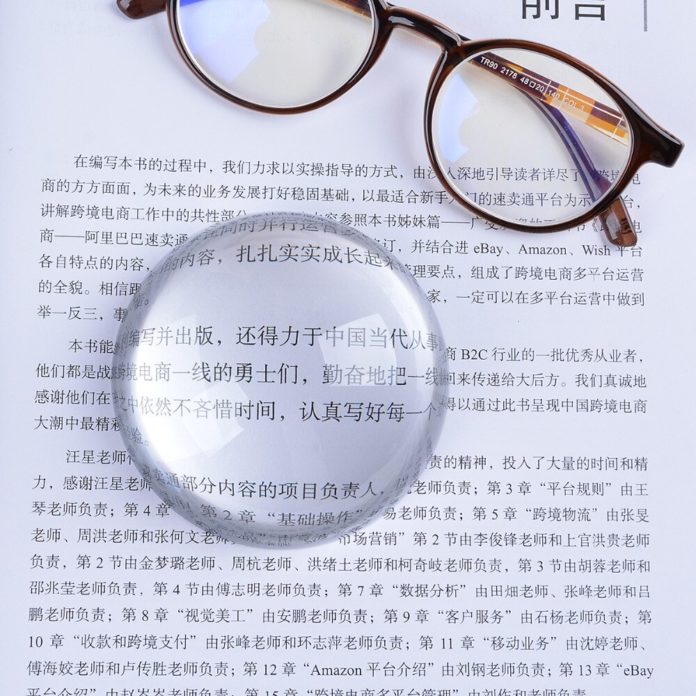Operation Inspiration
For thousands of years, soothsayers have used crystal or glass balls in their practice. Supposedly, as the sun strikes the ball, it will mist up from within, just before a “vision” appears. The soothsayer would then interpret that murky vision and help the questioner make whatever important life decision they were entrusting to this “seer.” OK, not a very Jewish thing. But you know what is? Crystal chandeliers!
In fact, my 8th grade rebbi told us of the time a plumber visiting his home asked, “I work in a lot of Jewish homes. Tell me, what is the religious significance of the chandelier?” I guess it’s such a common thing to find in a Jewish home that this fellow assumed it was part of the Taryag mitzvos. If you thought it was too, well, sorry to disillusion you. In truth, though, the fancy trappings of our homes do play a role in reminding us that we are b’nai melachim, princes and princesses, as Hashem is the King, and He is our Father.
One morning, I davened in a shul I had not been to in a very long time. I noticed they had a magnificent crystal chandelier over the Bima. It was truly breathtaking, but I also noticed that two crystals were missing on the side facing me. Mostly because it was so beautiful in its glittering symmetry, the missing pieces were even more glaringly apparent.
As I thought this over, I realized what a shame it was that I was gazing at a masterpiece of artistic arrangement, intended to beautify this Bais HaKnesses and give honor to Hashem, yet all I took note of were the places where this chandelier fell short. It was 99.9% perfect. Why did I have to focus on what was wrong?
On the one hand, it taught an important lesson, as I recall a moshol I was told years ago as a school child. It was about someone who did all sorts of mitzvos, yet never walked to collect tzedakah (at least I think that was the parable.) Because the person’s feet had not been used for a mitzva, when they got to Gan Eden, they were clothed in beautiful garments: the best suit, nicest hat, fancy belt and buckle, but they were barefoot. “Imagine,” said the rebbi, “how embarrassed someone would be to attend a wedding dressed that way! Looking stunning, but something glaringly deficient in them.” That was the attempt to convey to us the importance of fulfilling all the mitzvos and not just picking and choosing. Were we to opt to ignore some commandments, our souls would not be sanctified in those areas and we’d be left as the fellow in the moshol, dressed to the nines but ridiculously barefoot.
On the other hand, though, I realized that it was not my place to look askance at this chandelier for its missing baubles. Instead, I told myself to focus on the fact that overall, it was a magnificent piece and I was sure when they were able to, they would replace the lost parts.
Not only that, but I realized that this is often the way we look at people. We may see people who do so many wonderful things. They are kind and thoughtful, studious or helpful, devoted, conscientious, or so many other wonderful things. Yet, instead of gazing into their souls and seeing these magical visions, we notice the chips in the crystal and highlight the dark areas instead. And, truth be told, that isn’t as much a problem with them, as with us.
When you’re looking for something, you will most likely find it. If you’re looking for the good in things, you’ll find it. If you’re looking to criticize, you’ll find that. We often see the world not as it is, but as we are. To me, that means the choice of what I see in the crystal is up to me.
When I look at someone, I can choose to see the beautiful light they bring to the world, instead of focusing on the dark spots. In fact, this crystal ball becomes a mirror of myself. I, like probably most people on Earth, believe I have many good qualities and gifts to offer the world. When we look at ourselves, that’s mostly what we see. Am I missing a few crystals? Sure, but for the most part I’m a pretty good person. Now, if I can see things that way when I’m looking at myself, why not when I look at others? That’s looking at the chandelier, not the missing crystals.
There’s one final benefit to this kind of crystal-gazing which is especially appropriate as we approach Rosh HaShana. Hashem works mida-kneged-mida, measure-for-measure. As we treat others, Hashem treats us. That means that if, when we look at someone, we see the cracks and breaks, Hashem will see those areas in us where we’re not the best. However, when we gloss over the missing pieces and instead take in the beauty of the big picture, appreciating it for all the good it offers, then that’s how Hashem will judge us as well. If we look for the good in others, Hashem will look for the good in us and judge us as favorably as we judge them.
Maybe you won’t agree with me, but as far as I’m concerned, the lesson and what I need to do about it is… well, crystal clear.
© 2021 – All Rights Reserved
Did you enjoy this column? Feedback is welcome and appreciated. E-mail info@JewishSpeechWriter.com to share your thoughts. You never know when you may be the lamp that enlightens someone else.






